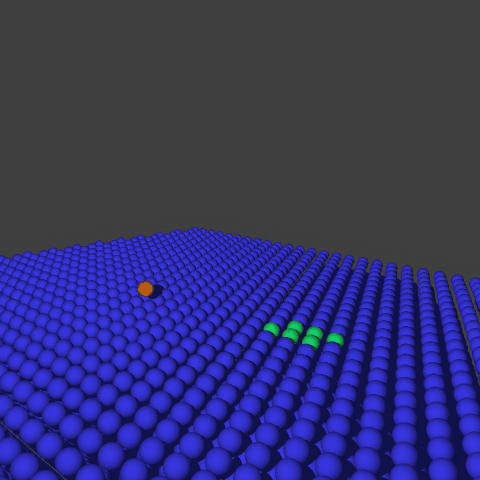We have used an annimatd GIF to produce the moving image. We loaded it as the "Featured Image" and did not include a "Featured Video" at all. This will then load the image in place of the video.
This is an example of a 2keV Ar ion impact on a Cu surface. The average supttering yield is less than one atom per ion. Experiments confirm the average yield, but when analysing the sputtered material often see large clusters (~6 atoms, or more) in the ejected material. The question was, if the yield is so low how do such large clusters form?
The simulation shows the ejection of a 6 atom cluster coming intact from the surface. This is a rare event, it only happens when the ion is scattered across the surface of the target by a surface atom - rather than penetrating deep into the target. Most other impacts do little surface disruption and only occassionally eject an atom. Thus the average sputtering yield is less than one - dominated by these low activity events - but the detailed of the ejected material is dominated by these rare events.

Comments:
If you would like to leave a comment then please login and/or register. If you are logged in and seeing this message it is because we have not received the acknowledgement of your email address yet.